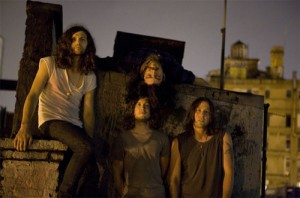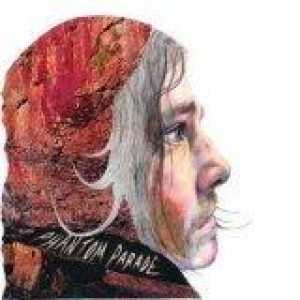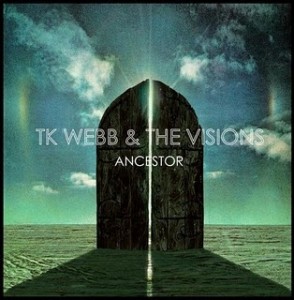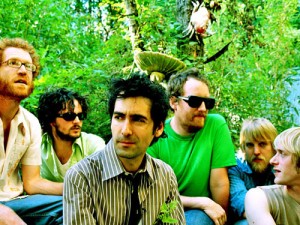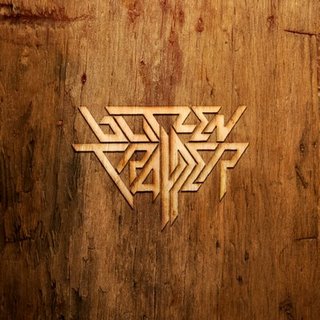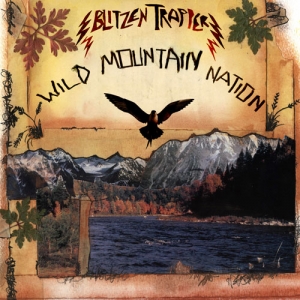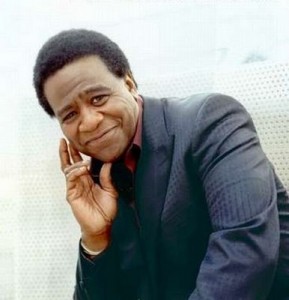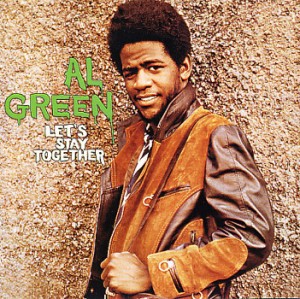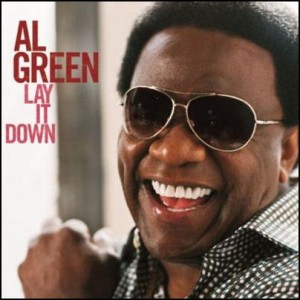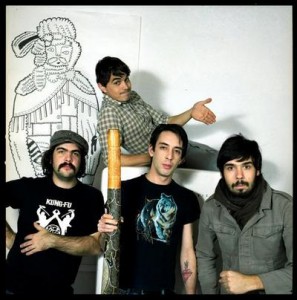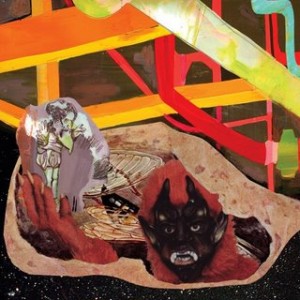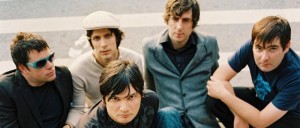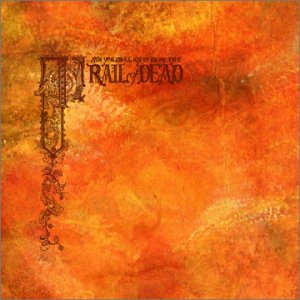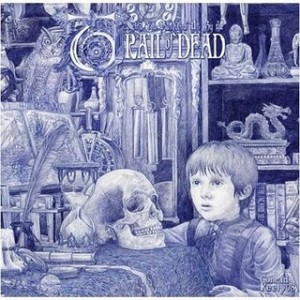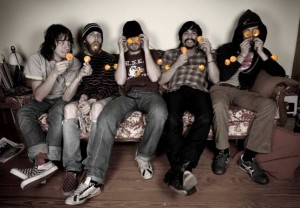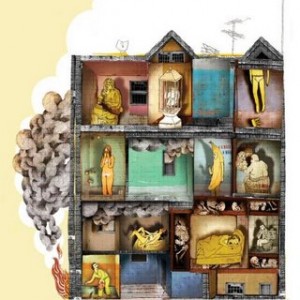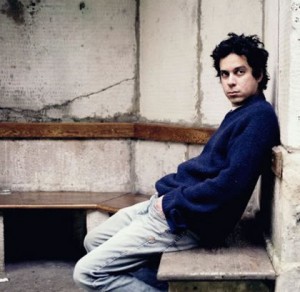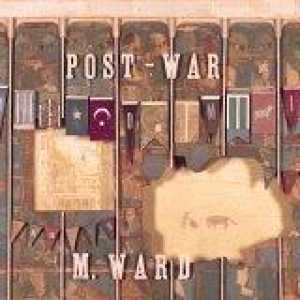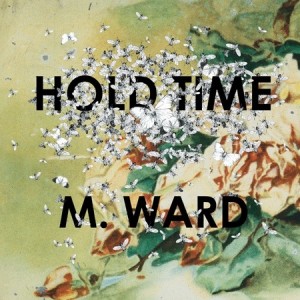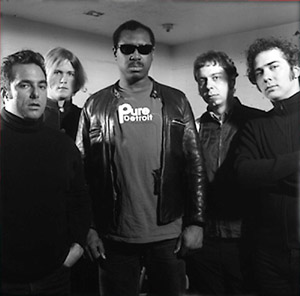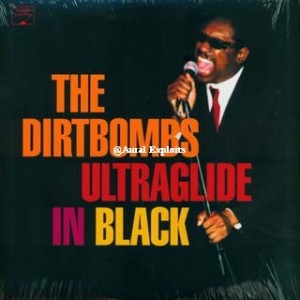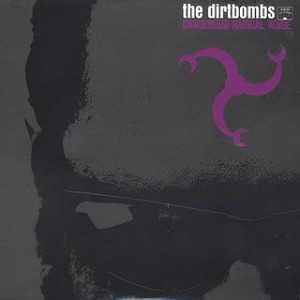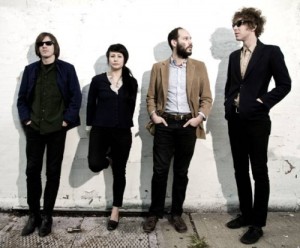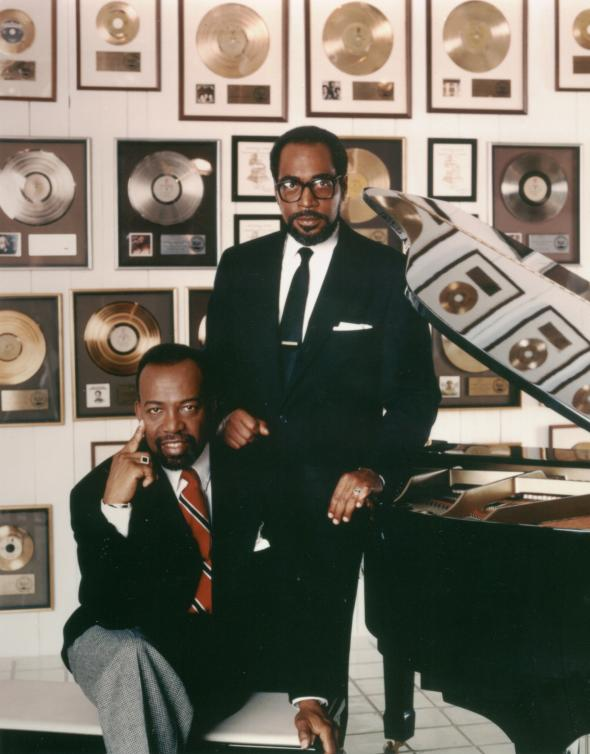 Let’s go back to a different time when vinyl singles’ sales were the barometric metier judging most popular artists’ mainstream success. It was an era, nearly forty years removed from the modern internet age, when composers and arrangers still constructed tunes for various singing groups, the way Motown did it in the ‘60s and Jazz artists had done prior to the dawn of ‘50s rock and roll. Though strict Blues numbers were generally written and performed by the same artist, its more accessible offshoot, Rhythm & Blues, relied on not only the lyrical pen of a songwriter, but the master craftsmanship of an arranger and the interpretive voices who brought the song to life.
Let’s go back to a different time when vinyl singles’ sales were the barometric metier judging most popular artists’ mainstream success. It was an era, nearly forty years removed from the modern internet age, when composers and arrangers still constructed tunes for various singing groups, the way Motown did it in the ‘60s and Jazz artists had done prior to the dawn of ‘50s rock and roll. Though strict Blues numbers were generally written and performed by the same artist, its more accessible offshoot, Rhythm & Blues, relied on not only the lyrical pen of a songwriter, but the master craftsmanship of an arranger and the interpretive voices who brought the song to life.
And so it was, legendary R & B maestros Kenneth Gamble and Leon Huff made their livings as well-conditioned behind-the-scene setup men, providing a Classically trained orchestra for some of the greatest singing groups of all-time during the ‘70s. Just as Motown’s hit singles by the Temptations, Supremes, and Four Tops ruled the ‘60s charts (alongside the Beatles and the Stones), Gamble & Huff’s Philadelphia International Records dominated the ‘70s (beside Elton John, Stevie Wonder, and discotheque music). Directly responsible for igniting the enormously uplifting dancehall fad, known to all as the much-maligned Disco Era, this accomplished dynamic duo then set out to clean up their hometown Philadelphia slums with some of the proceeds received while sitting in the shadows at the top of the musical world.
It all began in the early ‘60s, when Camden-born Huff got a job hustling for Johnny Madera & David White’s music firm, playing piano on the Ad Libs posh soul delight "Boy From New York City" and co-composing Patty (LaBelle) & the Emblems’ pining hand-clapped lament, "Mixed Up Shook Up Girl." While working at the same Manhattan building, Gamble would meet Huff in the elevator, eventually developing a partnered relationship that’d ultimately crown them as the sonic architects of classic Philly soul.
Prior to becoming the foremost stylistic magnates in the City of Brotherly Love, they assembled unified in-house orchestra, MFSB (a.k.a. Mother Father Sister Brother), a robust entourage whose instrumental scores augmented a wide variety of first-rate singers at historic Sigma Sound Studio. Scribe Lynell George called Gamble & Huff’s musical style ‘sweaty, gritty, elegiac, sensual’ in the well-annotated 64-page booklet complementing ‘08s praiseworthy 71-song 4 CD collection, Love Train: The Sound Of Philadelphia. Simply the culmination of all that’s good about doo-wop, smooth Jazz, be-bop, and satiny funk, Love Train holds up well against Stax-Volt Singles and Motown: The Classic Years as a time-honored compendium.
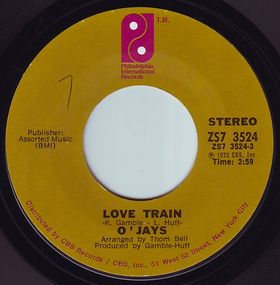
Gamble’s favorite movie, The Glenn Miller Story, celebrating the venerable Swing Jazz bandleader, provided inspiration for prospective enlightenment. Correspondingly, Gamble formed MFSB, an ensemble that quickly became his and Huff’s creative engine for aspiring vocal groups such as the Delfonics, Harold Melvin & the Blue Notes, the O’Jays, and dozens more. The pair’s inaugural Top 10 smash was Soul Survivors congested exasperation, "Expressway To Your Heart," a Rascals/ Righteous Brothers blue-eyed soul knockoff spurred to fruition by Schuylkill Highway’s heavy traffic. An obscure collaborative ’70 album, Gonna Take A Miracle, enjoined reticent white lyricist Laura Nyro with esteemed black songbird Patti LaBelle. Soul legend Jerry Butler’s strapping ’69 anecdote, "Only The Strong Survive," and Wilson Pickett’s beaming omen, "Don’t Let The Green Grass Fool You," preceded a string of green-labeled Philadelphia International best-sellers. Commencing with the O’Jays wickedly foreboding ’72 breakthrough, "Back Stabbers," and moving through to rugged baritone dignitary Teddy Pendergrass’ winsome ’80 confection, "Love TKO," these were salad days for diehard soul fan.
In between, Gamble & Huff ran boutique labels, scored several gold-selling pop and soul hits, and even taught Michael Jackson some studio tricks that’d help the King Of Pop devise dual masterpieces, Off The Wall and Thriller. Three Degrees’ classy lipstick-traced love trinket, "When Will I See You Again," broke overseas in Japan, winning the prestigious Tokyo Song Festival before spreading to Europe, topping the British charts, then conquering America. Party jams such as the Jacksons "Enjoy Yourself" and the O’Jays "Livin’ For The Weekend" countered topical civic-minded reflections such as Hrold Melvin & the Blue Notes "Wake Up Everybody." And everyone sang glory hallelujah for the whole wide world to hear on the O’Jays Gospel treatise, "Put Your Hands Together."

Ably combining the search for peace with a bright-eyed salutation that stands the test of time as a timeless freedom-ringing testimonial, the O’Jays magnificent "Love Train" needs no introduction (and has none). It starts cold with a cymbal-crashing bass-boomed beat, irresistible symphonic radiance, swooned Moog sway, and sliding hi-hat, then soars to the majestic fraternal order Sly & the Family Stone’s devotional "Everybody Is A Star" and the Beatles lucid "All You Need Is Love" ambitiously achieved previously.
Inspired by ‘60s civil rights marches, activist freedom fighters, and the black nationalism popularized by James Brown’s "Say It Loud, I’m Black And I’m Proud" as well as the Impressions "People Get Ready," Gamble soon became a noble community leader. All-star charity single, "Let’s Clean Up The Ghetto," primed Gamble for his extraordinary mission to purify urban domains through schooling and work experience. Gamble bought and restored many condemned and vacant South Philly properties for low-income families, concurrently opening local charter schools.
Gamble humbly explains, "The program we have is centered around education and our slogan is ‘when you know better you can do better.’ Without a great education, you can’t comprehend this environment at all. Be around people who motivate."
Adds Huff, "Teddy Pendergrass did "You Can’t Hide From Yourself," pledging how everywhere you go, you are there. You look in the mirror. You can’t run from yourself. There’s issues in the world. Everybody’s gotta do a little. Nobody’s a savior."
Reecently, Patti LaBelle and singing partners Nona Hendrix and Sarah Dash got together with Gamble & Huff to record earnest melancholy manifesto, "Tears For The World."
"All the violence in the world makes you wanna cry," Huff says. "Humans have enough info nowadays to understand war, poverty, and violence should be beneath us. We’re destroying the earth ‘til there’s no air and water. People gotta be more like their maker, more peaceful."
To mark the release of Love Train: The Sound Of Philadelphia, a same-named two-part PBS special will be aired around Thanksgiving. Featuring Gamble & Huff-related artists such as Jerry Butler, the O’Jays, Delfonics, Intruders, Three Degrees, and MFSB, it was taped at Atlantic City’s Borgata Casino-Hotel for a loving audience.
Peering back, you must be content with the fabulous output you’ve rendered.
GAMBLE: While we were recording many of these songs, we listened for mistakes from a critical ear. Now I listen to the music we made and just enjoy it. I say, ‘Huff, I can’t believe this record.’ I’ll put on "Love Train" and say, ‘Wow. That’s unbelievable.’ It’s hard to believe we were able to do so much quality music in such a short time.
HUFF: New artists, I guess they’re writing from their own experiences like we were back then. They’re reflecting on the world they’re living in.
Do you feel there are a lack of topnotch vocalists these days?
GAMBLE: I’m not gonna condemn today’s singers but there’s a difference - Gladys Knight, Aretha Franklin. Do you see another Wilson Pickett on the horizon who could scream? I don’t know. We were fortunate to work with some of the best singers the music biz had to offer – Jerry Butler, Dusty Springfield. We produced a Nancy Wilson album that’s one of my favorites. Singers like Teddy Pendergrass, Eddie Levert, Walter Williams – there’s no comparison.
It’s hard to beat the warmth of Gamble-Huff orchestrations with sampler machines.
HUFF: You can never top the human factor. There’s nothing like being in the studio with a live guitarist and drummer. It’s a stroke of genius how they produce records today. But I’m glad I experienced in my time, as a pianist, performing with a live band. Can’t beat it. It don’t have the same dramatics now. That machine just drones along. With live musicians, you have all these dynamics.
GAMBLE: Plus, the records we did, there were certain elements you can’t have with machines. People worked so hard they’d be sweating. The biggest thing you had were mistakes that may come and you say, ‘leave it like that ‘cause you could never do it again.’ It’s the human factor that makes our music harmonize with your body. A lot of today’s music, you could put a drum machine on, fly to London, and the drum machine’s playing the same thing. There’s nothing like a live drum fill.
HUFF: I still love the new music. Young guys sample a lot of our music. We appreciate them. It keeps us current in the business and shows us they really listen to our music.
GAMBLE: But do you think they could’ve produced a record like "Me & Mrs. Jones" with a machine?
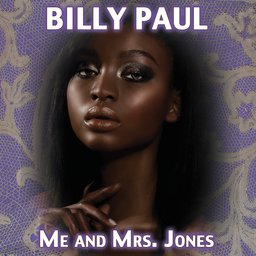 When "Me & Mrs. Jones" came out, I never thought it’d appeal to the mass public. Billy Paul’s wailing bellow had a novelty-like quality that surged far beyond the plush string arrangement.
When "Me & Mrs. Jones" came out, I never thought it’d appeal to the mass public. Billy Paul’s wailing bellow had a novelty-like quality that surged far beyond the plush string arrangement.
HUFF: I’m with you. I was in the studio listening to playback. It was so different. The orchestration was much more Jazz since Billy was a Jazz artist. That’s his roots. But it was a different type of production. It didn’t strike me immediately like Harold Melvin & the Blue Notes’ "If You Don’t Know Me By Now." It had a different feel.
GAMBLE: What made that such a hit was the story was real. People related to it. I knew it was a hit before it was released. Billy played it at a small Philly club, The First Nighter, which held 150 people. He performed one night and did "Me & Mrs. Jones" and turned the place out. Nobody heard it before and he had to play it two times people loved it so much.
Russell Thompkins, Jr. of the Stylistics had a gorgeous bell-toned falsetto captured brilliantly by your associate Thom Bell.
HUFF: Thom Bell and Linda Creed wrote all their songs. Hugo & Luigi owned their label, Avco. Now there’s two different Stylistics touring overseas.
GAMBLE: Russell had a distinctive voice. I remember listening to the Stylistics first single, "She’s A Big Girl Now," and being impressed.
Phillipe Wynne of the Spinners, on the other hand, had a flexible freestyle bari-tenor approach that indirectly affected rap.
HUFF: He ranks up at the top. Not only was he a great recording artist, but also a great performer. People loved him. He had a lot of energy. His life came to an end too soon. He had tremendous potential. Thom struck a groove with the Spinners.
My favorite albums Gamble & Huff produced were the O’Jays Ship Ahoy and Spinners Pick Of The Litter. What’s one of yours?
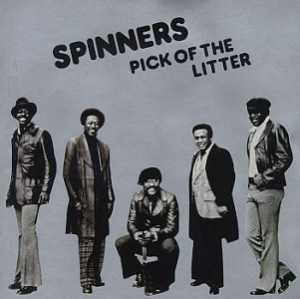
GAMBLE: Unmistakably Lou by Lou Rawls. "Lady Love" and "Groovy People" were real good for Lou’s comeback. Getting back to the track, "Ship Ahoy," through the sound affects you could almost feel the struggle, agony, and pain people on slave ships had on Atlantic journeys. That arrangement was a challenge.
The famous rap term ‘gangster lean’ was actually first used in William De Vaughn’s one big hit, "Be Thankful For What You Got."
HUFF: Right. ‘Diggin’ the scene where the gangster lean.’
You prefigured the shuffling disco beat that would sweep ‘70s America with the Trammps "Where Do We Go From Here," predated only by Hues Corporation’s hip-shaking aversion "Rock The Boat" and Ohio Players slinky "Skin Tight."
GAMBLE: They were on Golden Fleece Records. That was part of our Philly group of labels – TSOP, Tommy, Gamble.
Gamble Records released the greatest Mother’s Day song ever, the Intruders fervent childhood reminiscence, "I’ll Always Love My Mama."
GAMBLE: It’s a classic. Those kinds of songs will be around forever.
Was it difficult assembling the MFSB orchestra for studio rehearsals?
GAMBLE: No. They looked forward to coming in the studio. It’s funny. Most of the string players were in the Philadelphia Symphony Orchestra. They were playing Bach and Beethoven to "Love Train." Same musicians, but none of our artists sounded the same. Jerry Butler didn’t sound like Lou Rawls and Harold Melvin’s Blue Notes didn’t sound like the O’Jays. There was a range of styles, grooves, arrangements, angles, and a wealth of ideas. Yet we had the same ingredients and same studio. We even had a #1 LP with the MFSB orchestra and "T.S.O.P." became Soul Train’s theme. Ballads, cha-cha’s, uptempo music, I used to go to ‘70s discos just to watch people dance to that music. It amazed me how we did so many styles.
"Bad Luck" was one of disco’s earliest creations. Sociopolitical ballad "Wake Up Everybody," also a hit for Melvin’s Blue Notes, came later. Both were written by the relatively unknown, Victor Carstarphen.
HUFF: Victor grew up in Camden where I lived. I knew him since he was pre-teen. I told Victor to come over and work with Mc Fadden & Whitehead (of "Ain’t No Stoppin’ Us Now" fame), who were looking for a pianist. He’s a very talented keyboardist who’s been in the Trammps road band for years.
A few black ‘70s girl groups copied Gamble & Huff’s studio styling – First Choice and Ecstasy Passion & Pain.
HUFF: I think with First Choice, some people from our band, like Norman Harris, produced them and used some of our ingredients - "Armed & Extremely Dangerous." They were good. Norman and them may’ve done Ecstacy Passion & Pain’s "Ask Me."
"Love Train" blasts off curtly. Did the band have to play a section of music before tapes rolled to get that song chugging along so instantaneously?
GAMBLE: No. There was a count off then everyone came in. The most important part of the production is the introduction. We were very serious about the intro. That’s when you put the needle on the record. You gotta capture a persons’ attention from the beginning, capture the imagination of radio programmers. I got about 40 seconds to knock him out. Ten to twelve seconds for intro, another ten for the hook, and another ten or so for the first verse. If you don’t have him by then, the record’s gonna go in the trashcan.
Leon Huff’s dancefloor masterpiece "I Ain’t Jivin’ I’m Jammin’" seemed based on the lurking piano rhythm bottoming Johnnie Taylor’s divorce-crossed "Cheaper To Keep Her."
HUFF: When I was doing that record, I wasn’t thinking ‘bout that. That was spontaneous. I told the musicians to follow me on upright bass and drums. That record just kept growing. They’re still dancing to it. It’s big in dancehalls where they do line dancing.
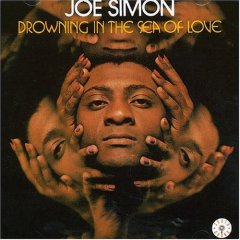 Joe Simon’s hauntingly grieved, gruff-voiced "Drowning In The Sea Of Love" appears on Love Train. I didn’t know Gamble & Huff had an association with Spring Records.
Joe Simon’s hauntingly grieved, gruff-voiced "Drowning In The Sea Of Love" appears on Love Train. I didn’t know Gamble & Huff had an association with Spring Records.
GAMBLE: Not only did we write and produce it, me, Huff, and Bunny Sigler sing on it. Spring was a label run by Roy and Julie Rifkin. They were our friends we’d see in New York. They asked us to cut Joe Simon. We did "Power Of Love," too. That doesn’t appear on this compilation. That’ll be on our next comp. (laughter) Joe Simon was a helluva singer. He’s doing Gospel now. He could’ve been an opera singer.
How come Gamble & Huff didn’t hook up with Spring’s bawdy rap progenitor, Millie Jackson?
GAMBLE: I think she had her own li’l crew. Plus, we weren’t trying to do a lot of independent stuff because once we got our own label, that’s what we concentrated on. It gave us autonomy. We could pick singles without third party A& R men.
Going back to ’63, Leon Huff did keyboards for Candy & the Kisses little-known dance-crazed ditty, "The 81."
GAMBLE: That’s the first record me and Huff worked on together! I hired Huff as a studio musician. I was working with Jerry Ross. Ross was a writer-producer who’d done the Sapphires "Who Do You Love" with me. He had the Dreamlovers "When We Get Married," his own label, Heritage Records, then went to MGM and started Collosus Records (Tee Set’s "Ma Belle Amie" and Shocking Blue’s "Venus" were hits). He did Jay & the Techniques "Apples Peaches Pumpkin Pie" and "Keep The Ball Rollin.’" He was also an A & R man for Mercury. That’s how me and Huff got in there to record Dee Dee Warwicke’s "I’m Gonna Make You Love Me." He also produced Jerry Butler. That’s how we got to cut him. Anyway, we wrote "The 81" and Huff did the B-side, "Two Happy People."
HUFF: "The 81" was a helluva groove, wasn’t it? Those girls were from Brooklyn.
Unlike Motown big wig Berry Gordy, who influenced Gamble & Huff’s production technique, your artists were given proper royalties.
GAMBLE: We tried to be examples ourselves. Be conservative and keep in mind we know from past experiences nothing lasts forever.
HUFF: Pay your taxes. Read the contract. A lot of musicians are so anxious to make a record they forget to read the contract.
- John Fortunato
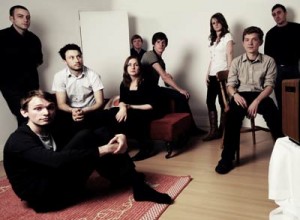 Taking their sloganeering moniker from a satirical ‘60s British newsreel hosted by David Frost (who was recently popularized in acclaimed Frost-Nixon movie), The Week That Was is the outstanding offshoot project of Field Music co-founder Peter Brewis. A former drummer in quirky indie-pop enthusiasts, the Futureheads, the 31-year-old Sunderland native grew up just outside England’s historic harbored metropolis, Newcastle, listening to his parents’ Beatles, Stones, Zeppelin, Police, and Peter Gabriel albums as an impressionable youngster.
As the sole musical architecture of The Week That Was, Brewis has created an episodic orchestral suite in which he appropriates Stravinsky’s thematic classical provocations, Van Dyke Parks’ skewed pop idiosyncrasies, and Left Banke’s oblique psychedelic tranquility. Making what may be deemed ‘magical outsider art,’ he has moved beyond ma and pa’s efficient album collection and away from Field Music’s somewhat rockier guitar-based purges with The Week That Was. Darkly illuminating piano embellishments, eloquently detailed violin and cello anesthetics, plus recurring Oriental-styled gamelan and marimba ornamentation secure Brewis’ resourceful dramatic musings.
"There are many variations upon the melancholy theme," the cautiously conferring Brewis submits. "All of the songs are about missing certain things, whether it be people or things you’re used to, like voices on the radio and t.v. The songs imagine if a certain thing wasn’t there. I try to put myself into different frames of mind like I’m a character – which I don’t do in Field Music."
Auspiciously, Field Music remains an ongoing priority partnering Brewis with his brother, David (currently promoting stripped down ‘freak pop’ combo, School Of Language), and school pal Andrew Moore (keyboards), but has been left to simmer while each brother concentrates on separate endeavors. The amicable trio’s eponymous ’05 debut and its improved ’07 Towns On Town follow-up camouflaged deceptive cheerfulness with substantive grief, using intricate pop constructions to get aggrieved messages across.
"On our first Field Music album, I guess we tried to figure out a way of creating language for ourselves through the music we knew and experimented with," Brewis presumes. "It has a dry, clinical sound, but was quite nice in a nostalgic way. The second has a more luscious sound. It was done democratically and was concise in a non-conventional way. Then, when Dave and I wanted to do something outside of Field Music, I started The Week That Was."
Taking their sloganeering moniker from a satirical ‘60s British newsreel hosted by David Frost (who was recently popularized in acclaimed Frost-Nixon movie), The Week That Was is the outstanding offshoot project of Field Music co-founder Peter Brewis. A former drummer in quirky indie-pop enthusiasts, the Futureheads, the 31-year-old Sunderland native grew up just outside England’s historic harbored metropolis, Newcastle, listening to his parents’ Beatles, Stones, Zeppelin, Police, and Peter Gabriel albums as an impressionable youngster.
As the sole musical architecture of The Week That Was, Brewis has created an episodic orchestral suite in which he appropriates Stravinsky’s thematic classical provocations, Van Dyke Parks’ skewed pop idiosyncrasies, and Left Banke’s oblique psychedelic tranquility. Making what may be deemed ‘magical outsider art,’ he has moved beyond ma and pa’s efficient album collection and away from Field Music’s somewhat rockier guitar-based purges with The Week That Was. Darkly illuminating piano embellishments, eloquently detailed violin and cello anesthetics, plus recurring Oriental-styled gamelan and marimba ornamentation secure Brewis’ resourceful dramatic musings.
"There are many variations upon the melancholy theme," the cautiously conferring Brewis submits. "All of the songs are about missing certain things, whether it be people or things you’re used to, like voices on the radio and t.v. The songs imagine if a certain thing wasn’t there. I try to put myself into different frames of mind like I’m a character – which I don’t do in Field Music."
Auspiciously, Field Music remains an ongoing priority partnering Brewis with his brother, David (currently promoting stripped down ‘freak pop’ combo, School Of Language), and school pal Andrew Moore (keyboards), but has been left to simmer while each brother concentrates on separate endeavors. The amicable trio’s eponymous ’05 debut and its improved ’07 Towns On Town follow-up camouflaged deceptive cheerfulness with substantive grief, using intricate pop constructions to get aggrieved messages across.
"On our first Field Music album, I guess we tried to figure out a way of creating language for ourselves through the music we knew and experimented with," Brewis presumes. "It has a dry, clinical sound, but was quite nice in a nostalgic way. The second has a more luscious sound. It was done democratically and was concise in a non-conventional way. Then, when Dave and I wanted to do something outside of Field Music, I started The Week That Was."
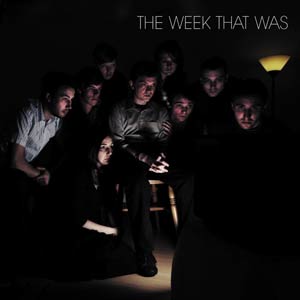 Using a laptop as a compositional tool to arrange songs, Brewis began navigating through material selected for his succinct one-off undertaking. On the resulting self-titled The Week That Was entree, he drapes debonair baritone sweetness atop duskily contemplative abstractions, fashioning an ambitiously symphonic allegory. On the album’s proverbial ‘stress track,’ an old school ‘50s-dated black-and-white video affixes itself to the sweeping Industrial-bound marimba-imbued bass-drummed gauntlet, "Learn To Learn."
Brewis contends, "Sonically, that was meant to be placed in the past. I wanted a big feel for the "Learn To Learn" video. There were some free black-and-white videos that fit the idea of a very domineering classroom feel. Like one grade school teacher told me, ‘You’ll be taught how to learn and it’ll be what the teachers decide.’"
Although leftfield comparisons to Pink Floyd’s similarly sullen schoolmaster scheme in The Wall are tangible, there’s a warmer solace inundating Brewis’ mannerly homecoming travelogues and chilly neo-Classical road odes. So, unlike that conjectured prog-rock masterwork, instead of getting caught up in any real interrogative didacticism or fascist manifestos, Brewis projects lonesome anguish, delighting in caliginous meditative moodiness. Suspenseful rain-dropped piano clusters and harpsichord flutters deluge the rat-a-tat rhythmic pulse fastening the dawdling "The Airport Line," a reflective elegy yellowing "Yesterday’s Paper" and supervening the ‘daily grind’ of Beach Boys-harmonized synthesizer-textured madrigal, "The Story Waits For No One." Hazy narcotic enchantment, "The Good Life," peppers prodding rhythms through its mannered baroque slipstream.
"I enjoy things that are harmonically different – not always major and minor chords. Duke Ellington provides nice fertile ground to get ideas from. I can’t play his hot tempo stuff. It’s too difficult. But Ellington stole from Orientalism and that may have some bearing on the album," Brewis explains before adding, "I don’t listen to much contemporary music. But the album’s I do like have a certain flow, sometimes narrative, unlike John Coltrane improvisations."
He also admits that a ripened absurdist Brooklyn-based novelist proved to be a valuable source of inspiration for the expressive versifying drafted onto the indelible The Week That Was.
"I wrote lyrics when I was reading Paul Auster books. I probably appropriated some catch-phrases from his mystery crime fiction."
Despite being unable to furnish a string section for US touring, Brewis should feel safe as home with his brother and two chummy bass-drum cohorts lending a hand. He claims they’ve responded superbly, giving a wider dynamic muscularity to each and every tune.
"My brother did the most to help. He’s the only person left in the band (from the original studio sessions). It was a totalitarian record," Brewis laughingly quips. "On tour we’ll bring a basic quartet. Two other friends who have helped us out for fives months and toured Europe are coming to the States. That will close the chapter on The Week That Was. It was an intense record, lots of pressure." He then jokingly concedes, "I wanna be in a democracy again."
As for his upcoming Mercury Lounge show in New York, March 9th, Brewis says, "We did a gig as Field Music there in the recent past. I’m gonna play The Week That Was in its entirety and then probably a few other songs. We don’t want to overstay our welcome so we’ll do 30-minutes."
Using a laptop as a compositional tool to arrange songs, Brewis began navigating through material selected for his succinct one-off undertaking. On the resulting self-titled The Week That Was entree, he drapes debonair baritone sweetness atop duskily contemplative abstractions, fashioning an ambitiously symphonic allegory. On the album’s proverbial ‘stress track,’ an old school ‘50s-dated black-and-white video affixes itself to the sweeping Industrial-bound marimba-imbued bass-drummed gauntlet, "Learn To Learn."
Brewis contends, "Sonically, that was meant to be placed in the past. I wanted a big feel for the "Learn To Learn" video. There were some free black-and-white videos that fit the idea of a very domineering classroom feel. Like one grade school teacher told me, ‘You’ll be taught how to learn and it’ll be what the teachers decide.’"
Although leftfield comparisons to Pink Floyd’s similarly sullen schoolmaster scheme in The Wall are tangible, there’s a warmer solace inundating Brewis’ mannerly homecoming travelogues and chilly neo-Classical road odes. So, unlike that conjectured prog-rock masterwork, instead of getting caught up in any real interrogative didacticism or fascist manifestos, Brewis projects lonesome anguish, delighting in caliginous meditative moodiness. Suspenseful rain-dropped piano clusters and harpsichord flutters deluge the rat-a-tat rhythmic pulse fastening the dawdling "The Airport Line," a reflective elegy yellowing "Yesterday’s Paper" and supervening the ‘daily grind’ of Beach Boys-harmonized synthesizer-textured madrigal, "The Story Waits For No One." Hazy narcotic enchantment, "The Good Life," peppers prodding rhythms through its mannered baroque slipstream.
"I enjoy things that are harmonically different – not always major and minor chords. Duke Ellington provides nice fertile ground to get ideas from. I can’t play his hot tempo stuff. It’s too difficult. But Ellington stole from Orientalism and that may have some bearing on the album," Brewis explains before adding, "I don’t listen to much contemporary music. But the album’s I do like have a certain flow, sometimes narrative, unlike John Coltrane improvisations."
He also admits that a ripened absurdist Brooklyn-based novelist proved to be a valuable source of inspiration for the expressive versifying drafted onto the indelible The Week That Was.
"I wrote lyrics when I was reading Paul Auster books. I probably appropriated some catch-phrases from his mystery crime fiction."
Despite being unable to furnish a string section for US touring, Brewis should feel safe as home with his brother and two chummy bass-drum cohorts lending a hand. He claims they’ve responded superbly, giving a wider dynamic muscularity to each and every tune.
"My brother did the most to help. He’s the only person left in the band (from the original studio sessions). It was a totalitarian record," Brewis laughingly quips. "On tour we’ll bring a basic quartet. Two other friends who have helped us out for fives months and toured Europe are coming to the States. That will close the chapter on The Week That Was. It was an intense record, lots of pressure." He then jokingly concedes, "I wanna be in a democracy again."
As for his upcoming Mercury Lounge show in New York, March 9th, Brewis says, "We did a gig as Field Music there in the recent past. I’m gonna play The Week That Was in its entirety and then probably a few other songs. We don’t want to overstay our welcome so we’ll do 30-minutes." 